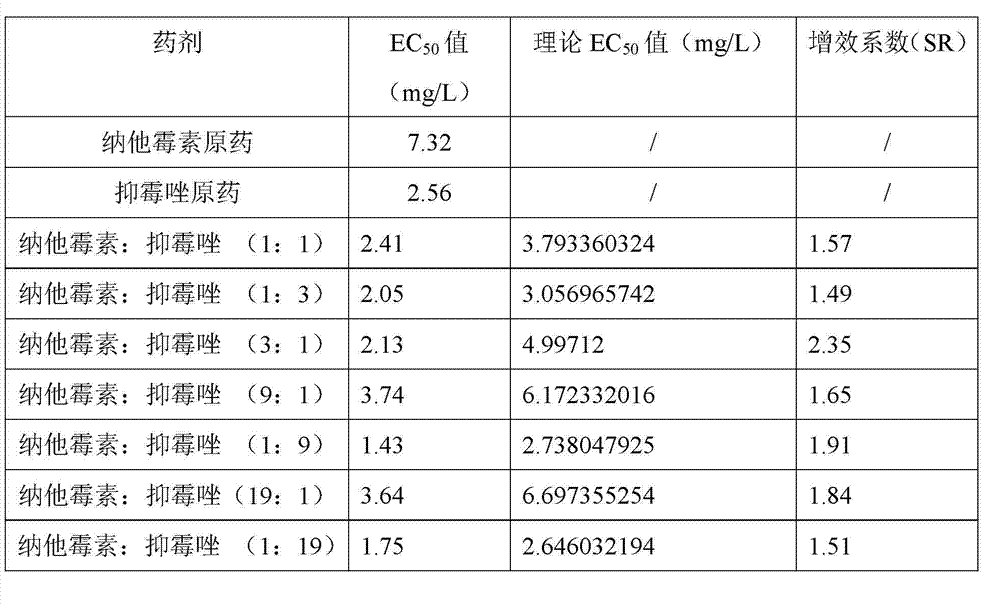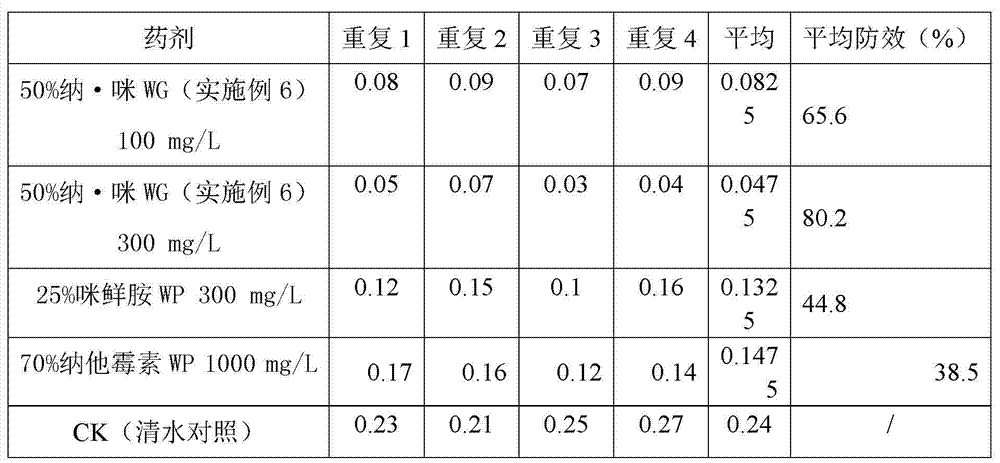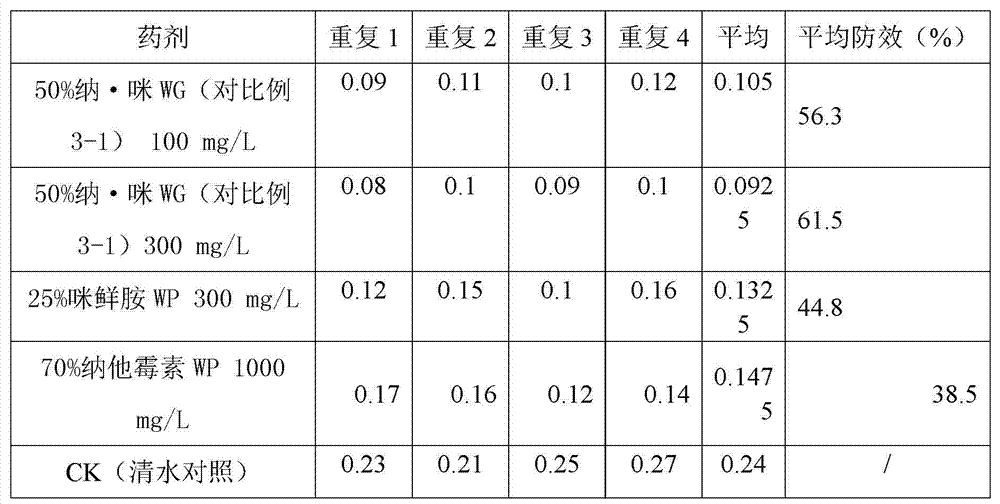Compound bactericide containing natamycin and uses of same
A technology for compounding fungicides and containing natamycin, applied in the directions of fungicides, biocides, biocides, etc., can solve the problems of threatening the health of consumers, increasing the use of drugs, and pathogenic bacteria resistance. Easy to drug resistance, easy to use, effect of drug resistance
- Summary
- Abstract
- Description
- Claims
- Application Information
AI Technical Summary
Problems solved by technology
Method used
Image
Examples
Embodiment 1
[0030] Embodiment 1, indoor formula screening:
[0031] Toxicity and synergistic coefficients were determined by dissolving natamycin and imazalil in different weight ratios in methanol, using the mycelial growth method to measure the inhibitory effect on Penicillium citri (Table 1), and then calculating EC 50 value and synergy factor.
[0032] According to the main prevention and control objects, select the ratio of synergistic coefficient (SR) ≥ 1.5, and carry out appropriate dosage form processing.
[0033] Table 1, the formula screening of preventing and treating Penicillium citrus
[0034]
[0035]Note: the above parentheses refer to the weight ratio of the two components, and the Penicillium citrus bacteria used in the experiment are resistant to imazalil.
Embodiment 2
[0036] Embodiment 2, indoor formula screening:
[0037] Toxicity and synergistic coefficient are determined by dissolving natamycin and carbendazim in different weight ratios respectively in hydrochloric acid solutions with a concentration of 0.1N, and using the mycelium growth method to determine the effect on Gibberella tritici (Table 2 ) inhibition, and then calculate the EC 50 value and synergy factor.
[0038] Table 2. Formula screening for preventing and treating wheat diseases
[0039]
[0040] Note: The above brackets refer to the weight ratio of the two components, and the experimental Fusarium rubella is resistant to carbendazim.
Embodiment 3
[0041] Embodiment 3, indoor formula screening:
[0042] Toxicity and synergistic coefficients were determined by dissolving natamycin and prochloraz in methanol at different weight ratios, using the mycelium growth method to measure the inhibitory effect on rice bakanae pathogen (Table 3), and then calculating EC 50 value and synergy factor.
[0043] According to the main prevention and control objects, select the ratio of synergistic coefficient (SR) ≥ 1.5, and carry out appropriate dosage form processing.
[0044] Table 3. Formula screening for controlling rice bakanae disease
[0045]
[0046] Note: The above parentheses refer to the weight ratio of the two components, and the bakanae pathogen used in the experiment is resistant to prochloraz.
PUM
 Login to View More
Login to View More Abstract
Description
Claims
Application Information
 Login to View More
Login to View More - R&D
- Intellectual Property
- Life Sciences
- Materials
- Tech Scout
- Unparalleled Data Quality
- Higher Quality Content
- 60% Fewer Hallucinations
Browse by: Latest US Patents, China's latest patents, Technical Efficacy Thesaurus, Application Domain, Technology Topic, Popular Technical Reports.
© 2025 PatSnap. All rights reserved.Legal|Privacy policy|Modern Slavery Act Transparency Statement|Sitemap|About US| Contact US: help@patsnap.com



